Smart home technology can help create a better sleeping environment and a sleep tracker can both be used as a tool to understand how well a person is sleeping
Getting a good night’s sleep is important for your overall health. According to the U.S. Department of Health and Human Services, “Getting enough sleep has many benefits. It can help you get sick less often, stay at a healthy weight, lower your risk for serious health problems, like diabetes and heart disease, reduce stress and improve your mood, think more clearly and do better in school and at work, get along better with people, and make good decisions and avoid injuries.
In addition, according to research published by Elizabeth Parks, of Parks Associates, “The average respondent takes 32 minutes to fall asleep on a typical night. Approximately 7% take longer than one hour to fall asleep. About one-third of respondents report both poor sleep quality and low energy when awake.”
With all this in mind, I thought it beneficial to look at how smart technology can help people get a good night’s sleep.
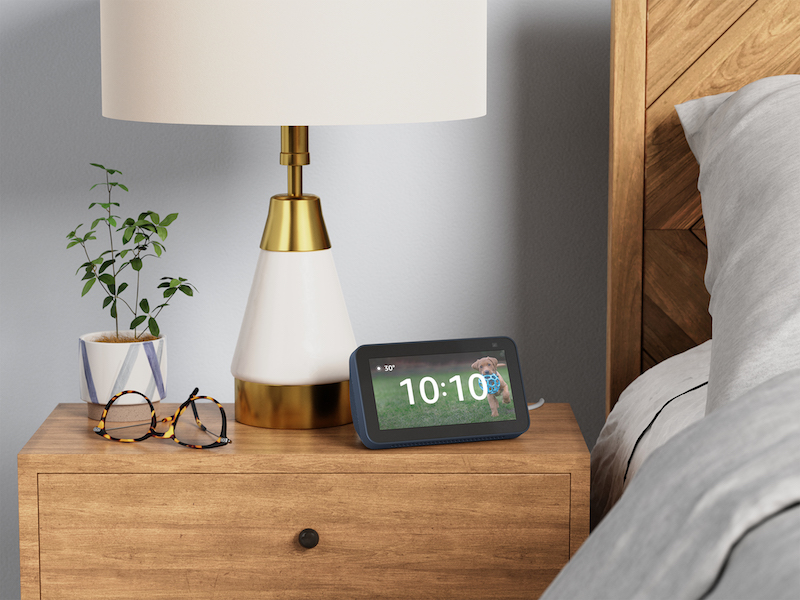
According to the Sleep Foundation, noise has a major impact on sleep. Exposure to too much noise during sleep has immediate effects while we are sleeping, which leads to short-term issues the next day, and over time may result in long-term mental and physical consequences.”
An Amazon Alexa smart home technology device by your bedside is an inexpensive tool for dealing with a noisy environment. There are skills for Alexa to help people fall asleep and to sleep more soundly. Alexa can play rain sounds, thunderstorm sounds, and white noise to provide a consistent background of sound that can drown out the disruptive noise of traffic, sirens, and other sounds that can wake you up at night.
Another Alexa skill for helping you fall asleep is the Guided Sleep Meditation Skill. It can help you relax, stop your mind from racing, and more easily fall asleep.
In addition, I personally find that an Amazon Echo Show 5 makes an excellent alarm clock for a smart home. For one thing, the Alexa IFTTT service allows you to create a trigger when the alarm goes off that can be used to turn on a coffee maker, restore a smart thermostat to its normal daytime set point, etc.
Given that many people don’t get up at the same time each day, this allows them to set the alarm to the proper time before going to bed with a simple voice command, and the other devices in their home will automatically be triggered at the correct time without having to individually adjust their settings.
The Amazon Echo Show 5 also includes a physical shutter for the camera so that there are no issues with the privacy of your bedroom being violated.
For those that want to create more of an immersive environment to drown out sounds, there also are specially designed earbuds for sleeping. One example are the Bose Sleepbuds, which are designed to be comfortable to sleep with — even for people who sleep on their side. Unlike regular earbuds, they don’t stream ordinary music or podcasts. Instead, they only stream content from the Bose Sleep app
Circadian/Human Centric Lighting Smart Home Technology
The U.S. General Services Administration provides an excellent explanation of the body’s circadian rhythms and circadian lighting, noting that a person’s “body clock” is regulated by circadian rhythms, which are physiological processes that occur approximately every 24-hours. These 24-hour rhythms have also been widely observed in plants, animals, fungi, and even bacteria.
An example of a circadian rhythm is a person’s wake/sleep cycle. A function of light is to entrain the body’s circadian system to the solar day so that the wake/sleep cycle is entrained or synchronized with the natural light/dark cycle on Earth. If a person’s circadian functioning is entrained, a person sleeps well at night and is alert during the day.
Sunset naturally triggers our body’s circadian system to prepare us for sleep. However, artificial lighting in our homes disrupts the affect of the lighting changes that occur at sunset on our bodies. Today, circadian lighting, can simulate the lighting changes that take place at sunset by shifting interior lighting more toward red hues and lowering the level of lights.
Professional smart home processor manufacturers all support the ability for integrators to include circadian lighting into smart home projects for their customers.
- Savant – Circadian lighting is natively supported by Savant
- Control4 – A Circadian lighting driver is available for sale. It can be found here.
- Crestron – Crestron has announced new tunable, full-color, LED light fixtures. These can be paired with a new Crestron SolarSync light sensor that communicates the outside color temperature to the new light fixtures. In addition, I’ve written a circadian lighting driver for Crestron systems that calculates the change in color temperature throughout the day along with the change in intensity of out the light outside. The driver can be used with any color changing bulb, or light fixture, including Philips Hue White Ambiance bulbs. The driver can be downloaded from my GitHub here.
Smart home technology hubs, including SmartThings, Hubitat, and others, also support circadian lighting.
Our computers, tablets, and smart phones produce blue light that our bodies associate with sunrise. There are settings on these devices that will automatically reduce the amount of blue light that they produce at night. For example, Windows 10 includes a “night light” setting for this purpose. Under iOS, this setting is called “Night Shift.” There are also special glasses that can be worn to reduce the level of blue light from computer screens and TVs. There are a large number of models to choose from online or, for those that wear prescription glasses, they can be ordered from an optometrist.
If you want to create a personal circadian lighting environment, then you can try the illumy smart sleep mask. The mask uses red and blue lighting to simulate sunset when you go to bed and sunrise when the built-in wakeup alarm is set to go off.
Controlling Temperature for Better Sleep
According to the Sleep Foundation, the temperature of your bedroom can make a significant difference to your sleep quality, pointing out that the best bedroom temperature for sleep is approximately 65 degrees Fahrenheit (18.3 degrees Celsius). This may vary by a few degrees from person to person, but most doctors recommend keeping the thermostat set between 60 to 67 degrees Fahrenheit (15.6 to 19.4 degrees Celsius) for the most comfortable sleep.
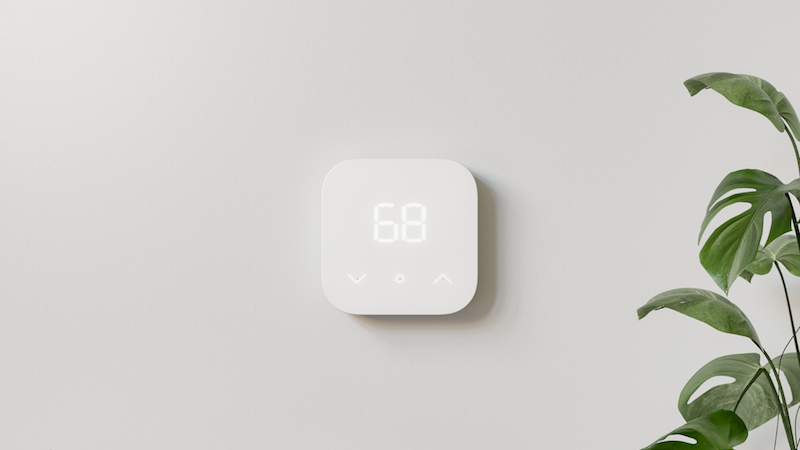
A smart thermostat can either be scheduled to automatically set back the temperature of your home at night or, if your bedtime varies from day-to-day, an Alexa routine that sets back your smart thermostat can easily be created and then triggered by saying “Alexa, good night.”
There are also a wide range of bed warming/cooling systems to provide a customized sleep environment for people living in the same home, or even sharing the same bed. For example, BEDJET, chilisleep, and Eight Sleep all make temperature control sleep systems that can help you to get a better night’s sleep.
Electric blankets and electric mattress pads can also provide you with a warmer sleep environment in the winter. I live in the mountains where temperatures can drop below 40 degrees Fahrenheit at night during the summer. I personally like to warm my bed up with an electric mattress pad right before I get into bed. I find it much more comfortable to get into a warm bed versus having to wait for my body to warm the bed up before it becomes comfortable. I use a combination of a smart plug and a SwitchBot to operate my, otherwise dumb, electric mattress pad.
Sleep Tracking Smart Home Technology
Measuring how well you sleep can be a valuable tool. Today, many smart watches, including the Apple Watch and fitness trackers, including models from fitbit, include the ability to track the wearer’s sleep.
On the other hand, some people don’t find wearing a watch to bed comfortable. Withings makes a simple mat that installs underneath your mattress and tracks a person’s sleep.
I had a chance to try out the Withings Sleep Tracking Mat for this article. Not long ago I wrote about the Withings Body Cardio Smart Scale (that article can be found here), so I was already familiar with the Withings Health Mate app. The app integrates all the smart health devices manufactured by Withings, to provide a comprehensive view of a person’s health, and to offer easy to understand advice based on the health data that is measured.
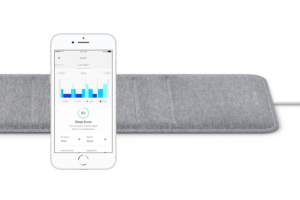
The Withings Sleep Tracking Mat comes packaged in a washable fabric cover and is exceptionally easy to install. You simply place the mat underneath your mattress, at the height of your chest, and plug the cable into the included USB power supply. I already had the Withings Health Mate app installed on my phone and after plugging in the Sleep Tracking Mat it was immediately detected when I opened the app. The app then walks you through the installation process, including connecting to the Sleep Tracking Mat over Bluetooth, allowing you to associate it with a family member that you’ve setup in the app, and connecting it to your home’s Wi-Fi network. At this point, the app configures the Sleep Tracking Mat, and it goes through a 10- minute process of calibrating itself to your mattress. Once the calibration is complete, the Sleep Tracking Mat is ready to monitor your sleep.
The Withings Sleep Tracking Mat includes two specialized sensors to monitor a person’s sleep from underneath a mattress. First, it includes a low-frequency sound sensor that is used to detect snoring. This sensor is incapable of hearing voices and to further protect privacy is only activated once a person has fallen asleep.
Second, the Withings Sleep Tracking Mat includes an air bladder, and the pressure of the bladder is monitored by a highly sensitive pneumatic pressure sensor. This is used to measure the movements of the user’s rib cage, their heart rate, as well as to analyze the different sleep phases and their duration. And, according to Withings, “The pneumatic sensor is sensitive to variations in a person’s cardiac activity, breathing rate, and movement detection. The Sleep Tracking Mat is then able to detect when the user is in bed, if they are sleeping, and at what stage of their sleep cycle they are in. For those concerned about the electromagnetic waves that the device could be transmitting during their sleep, the Sleep Tracking Mat only sends the data collected after the user has woken up and is no longer in bed.”
Finally, like all Withings smart health devices, the Sleep Tracking Mat has gone through multiple stages of testing and approval including tests to confirm the accuracy of the data in a hospital environment.
The Withings Sleep Tracking Mat, combined with the Withings Health Mate app, provides detailed measurements and analysis of your sleep. First, for simplicity, in the Withings Health Mate app you can see an overall sleep score that provides an easy to understand metric of how well you slept. The sleep score is based on measurements taken by the Sleep Tracking Mat including the total time spent sleeping, the consistency between the time you go to bed and get up on a day to day basis, the amount of time spent in restorative sleep phases and deep sleep, and the time spent awake from interruptions to your sleep. Your sleep scores can also be viewed as a graph, over a week or month, so you can view trends in your sleep.
The Withings Health Mate app also provides a bar graph that details the different phases of sleep that you went through during the night including times you were awake, in REM (the period of sleep where you dream), in light sleep, and in deep sleep.
The Withings Sleep Tracking Mat also integrates with IFTTT so, for example, you can automatically turn out the lights and set back the thermostat when you get into bed, turn on pathway lights when you get out of bed in the middle of the night, automatically mute your phone when you get into bed, and more.
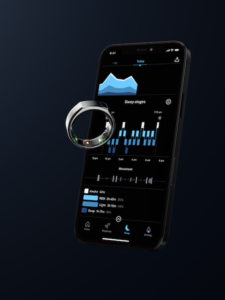
Another sleep tracking option for people who don’t want to wear a watch to bed is the Oura ring. It incorporates measurements of body temperature, heart rate, and blood oxygen levels to determine the wearer’s quality of sleep, how much time was spent in each sleep stage, and more. In addition, Oura learns about the wearer’s sleep quality over time. Then, based on nights when the wearer had the best night’s sleep, it will provide recommendations on when to start winding down to optimize the wearer’s sleep quality every night.
Sleep trackers can be a very useful smart home technology tool to evaluate how other actions you take, including using other sleep tech outlined above, impacts your sleep. For example, does playing white noise or rain sounds through a smart speaker to drown out the disruptive noise of traffic actually help you sleep better? Each person is different, so it can take some trial and error to find the tools that help you the most.
On the other hand, there are cases where people become so obsessed with their sleep tracker that the stress of obtaining a high score becomes a barrier to getting a good night’s sleep. So, it is important to keep in mind that a sleep tracker is just a tool and the most important result is whether you feel rested in the morning.
Summary
Getting a good night’s sleep is very important for our health. Proper relaxation, acoustical environment, lighting, and temperature can all contribute to a good night’s sleep. Smart home technology can help create this environment and a sleep tracker can both be used as a tool to understand how well a person is sleeping and to evaluate whether other tools are beneficial in helping a person sleep better.



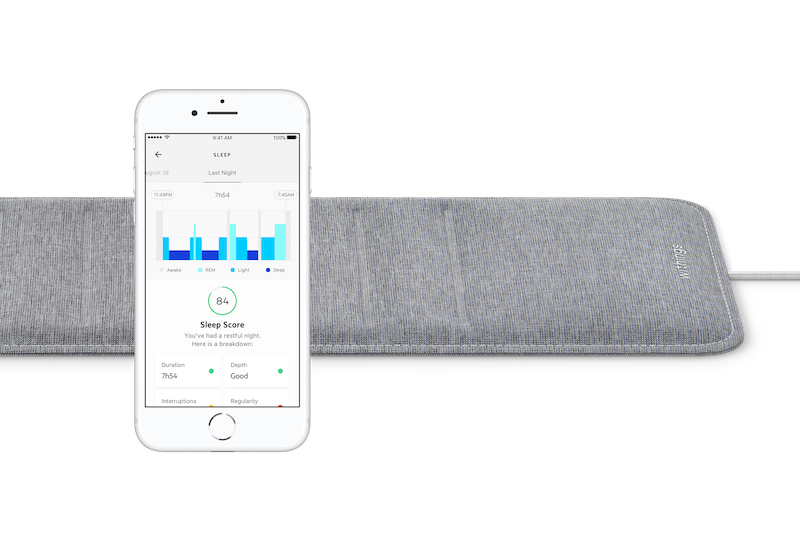






One Response
“The Economic Value of a Good Night’s Sleep” was one of the first articles I wrote here at Modern Health Talk. It spoke to my frustration after finding a 2011 Harvard study of the economic impact of sleep on corporate workplace productivity, but I found no study of individual benefits. So, I developed a simple computer model using a spreadsheet and some very conservative assumptions that started with one’s first job after college, paying $50K/year. But looking back later, I regret not adjusting the model to explore the value of good sleep in children.
The surprising results of my original model suggest that good sleep could save an estimated $300,000 in medical bills over one’s lifetime, more than $700,000 in increased net worth, and some $8 million in additional lifetime earning capacity. Think of how those benefits could have been accelerated if we promoted good sleep in children from the earliest ages as their young brains are developing and good habits are forming. (from https://www.mhealthtalk.com/promoting-good-sleep-in-children/)